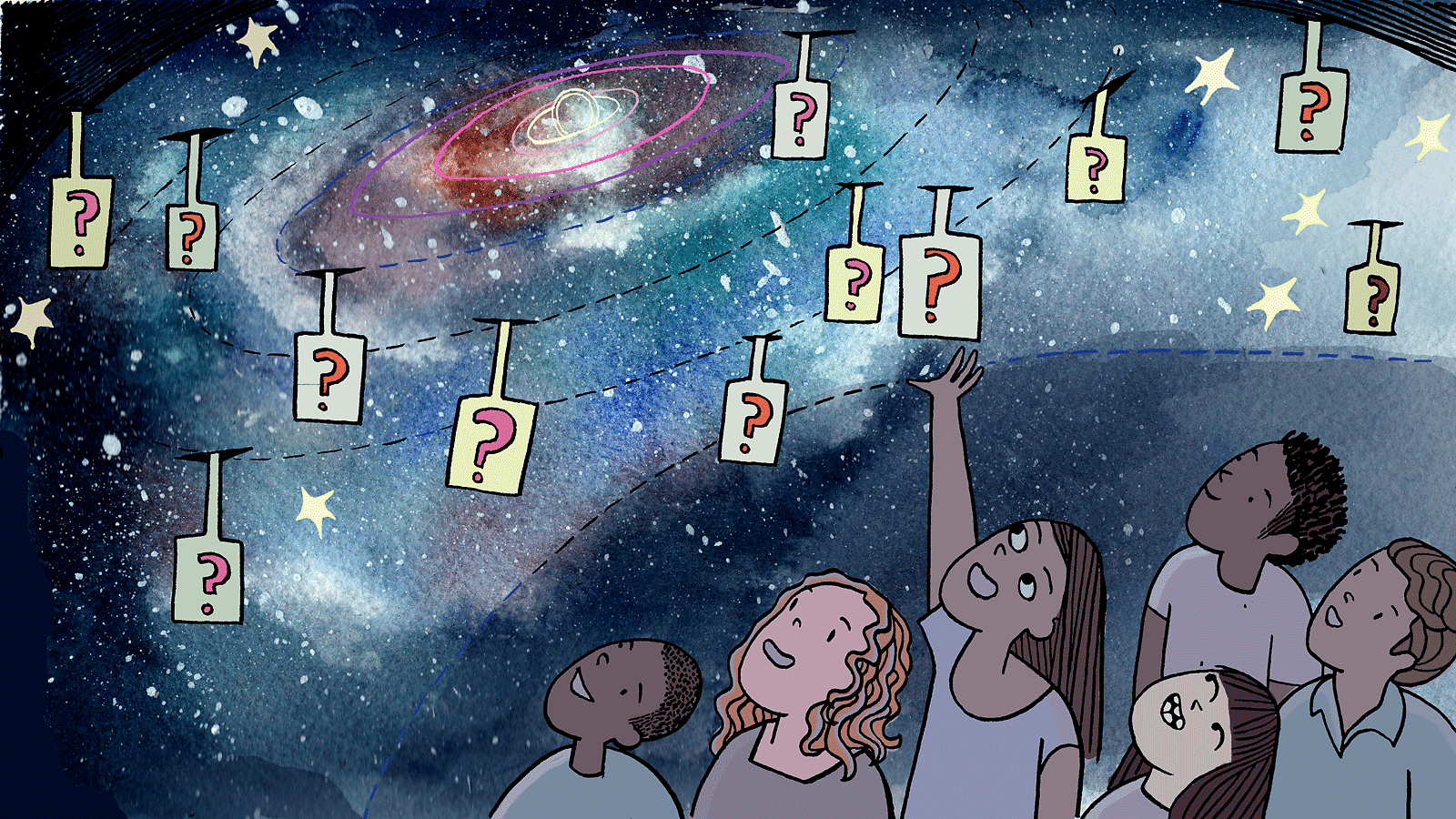Astronomers Edwin Hubble and Milton Humason in the early 20th century discovered that galaxies are moving away from the Milky Way. More to the point: Every galaxy is moving away from every other galaxy on average, which means the whole universe is expanding. In the past, then, the whole cosmos must have been much smaller, hotter and denser.
That description, known as the Big Bang model, has stood up against new discoveries and competing theories for the better part of a century. So what is this “Big Bang” thing all about?
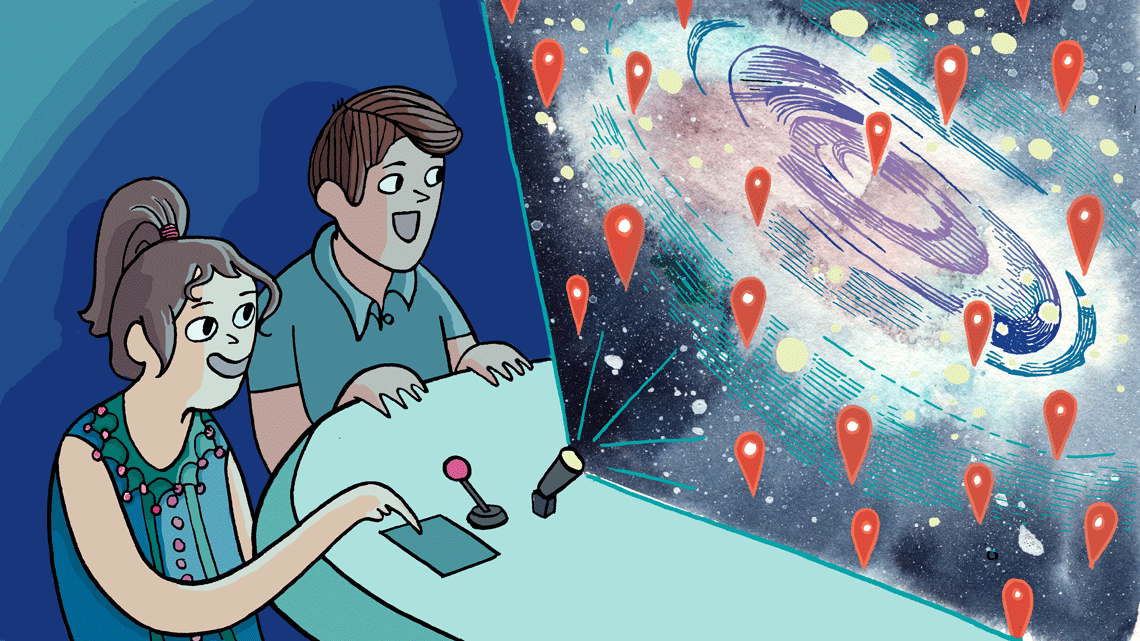
The Big Bang happened everywhere at once.
The universe has no center or edge, and every part of the cosmos is expanding. That means if we run the clock backward, we can figure out exactly when everything was packed together—13.8 billion years ago. Because every place we can map in the universe today occupied the same place 13.8 billion years ago, there wasn't a location for the Big Bang: Instead, it happened everywhere simultaneously.

The Big Bang may not describe the actual beginning of everything.
“Big Bang” broadly refers to the theory of cosmic expansion and the hot early universe. However, sometimes even scientists will use the term to describe a moment in time—when everything was packed into a single point. The problem is that we don’t have either observations or theory that describes that moment, which is properly (if clumsily) called the “initial singularity.”
The initial singularity is the starting point for the universe we observe, but there might have been something that came before.
The difficulty is that the very hot early cosmos and the rapid expansion called “inflation” that likely happened right after the singularity wiped out most—if not all—of the information about any history that preceded the Big Bang. Physicists keep thinking of new ways to check for signs of an earlier universe, and though we haven’t seen any of them so far, we can’t rule it out yet.
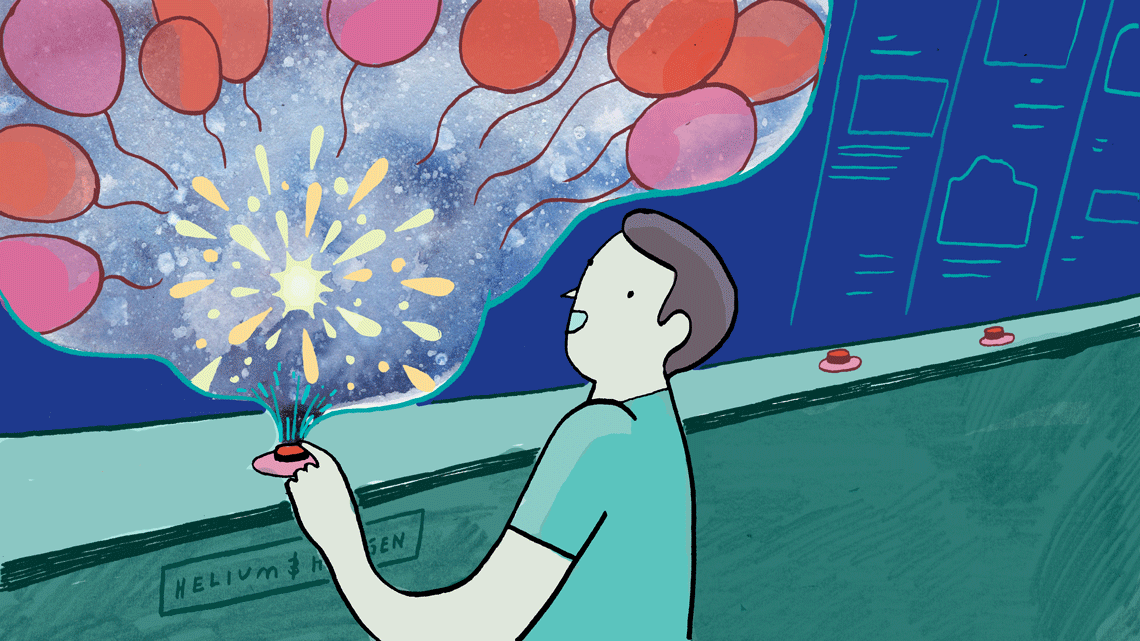
The Big Bang theory explains where all the hydrogen and helium in the universe came from.
In the 1940s, Ralph Alpher and George Gamow calculated that the early universe was hot and dense enough to make virtually all the helium, lithium and deuterium (hydrogen with a neutron attached) present in the cosmos today; later research showed where the primordial hydrogen came from. This is known as “Big Bang nucleosynthesis,” and it stands as one of the most successful predictions of the theory. The heavier elements (such as oxygen, iron and uranium) were formed in stars and supernova explosions.
The best evidence for the Big Bang is in the form of microwaves. Early on, the whole universe was dense enough to be completely opaque. But at a time roughly 380,000 years after the Big Bang, expansion spread everything out enough to make the universe transparent.
The light released from this transition, known as the cosmic microwave background (CMB), still exists. It was first observed in the 1960s by Arno Penzias and Robert Wilson. That discovery cemented the Big Bang theory as the best description of the universe; since then, observatories such WMAP and Planck have used the CMB to tell us a lot about the total structure and content of the cosmos.
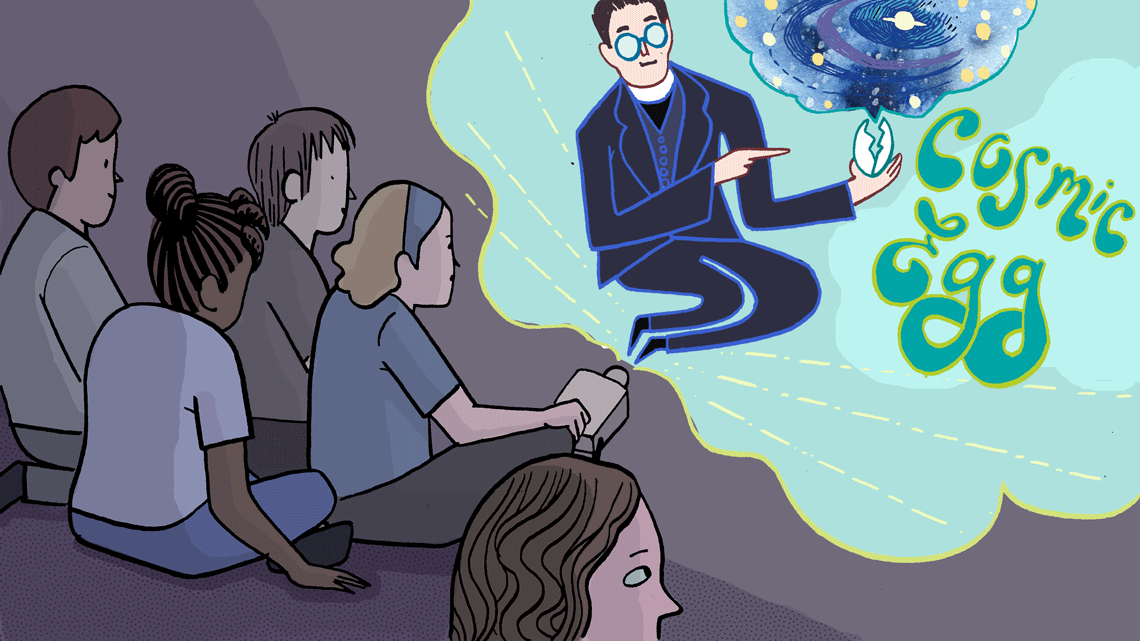
One of the first people to think scientifically about the origin of the universe was a Catholic priest.
In addition to his religious training and work, Georges Lemaître was a physicist who studied the general theory of relativity and worked out some of the conditions of the early cosmos in the 1920s and ’30s. His preferred metaphors for the origin of the universe were “cosmic egg” and “primeval atom,” but they never caught on, which is too bad, because …
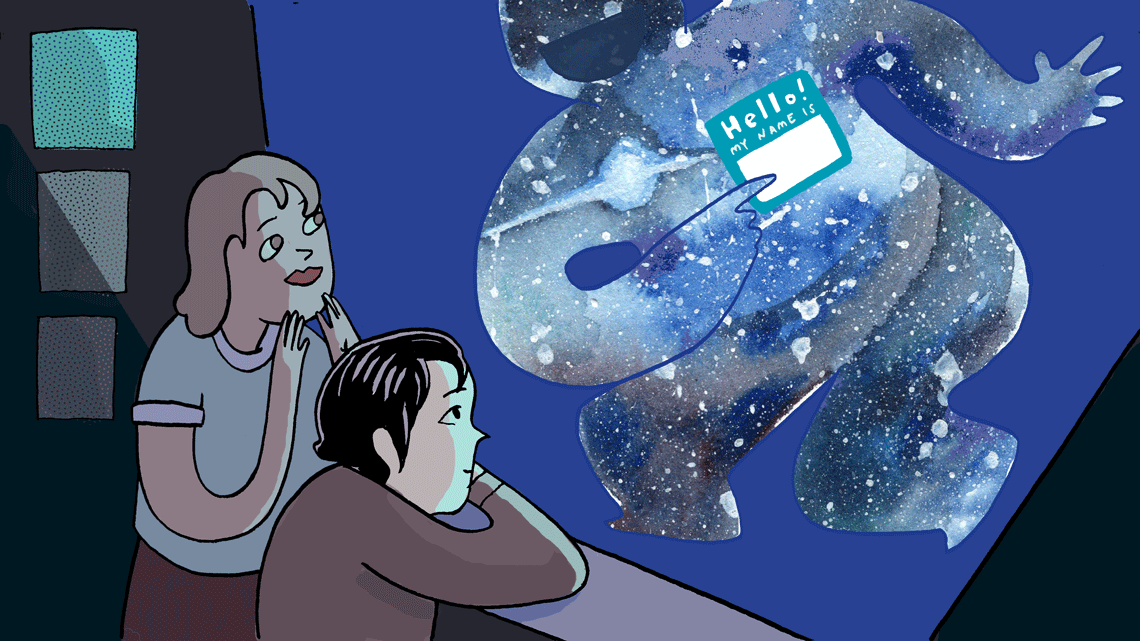
It seems nobody likes the name "Big Bang."
Until the 1960s, the idea of a universe with a beginning was controversial among physicists. The name “Big Bang” was actually coined by astronomer Fred Hoyle, who was the leading proponent of an alternative theory, where universe continues forever without a beginning.
His shorthand for the theory caught on, and now we’re kind of stuck with it. Calvin and Hobbes’ attempt to get us to adopt “horrendous space kablooie” has failed so far.
The Big Bang is the cornerstone of cosmology, but it’s not the whole story. Scientists keep refining the theory of the universe, motivated by our observation of all the weird stuff out there. Dark matter (which holds galaxies together) and dark energy (which makes the expansion of the universe accelerate) are the biggest mysteries that aren't described by the Big Bang theory by itself.
Our view of the universe, like the cosmos itself, keeps evolving as we discover more and more new things. But rather than fading away, our best explanation for why things are the way they are has remained—the fire at the beginning of the universe.



